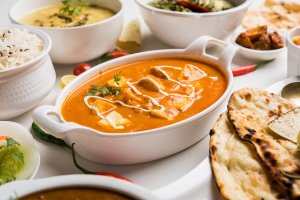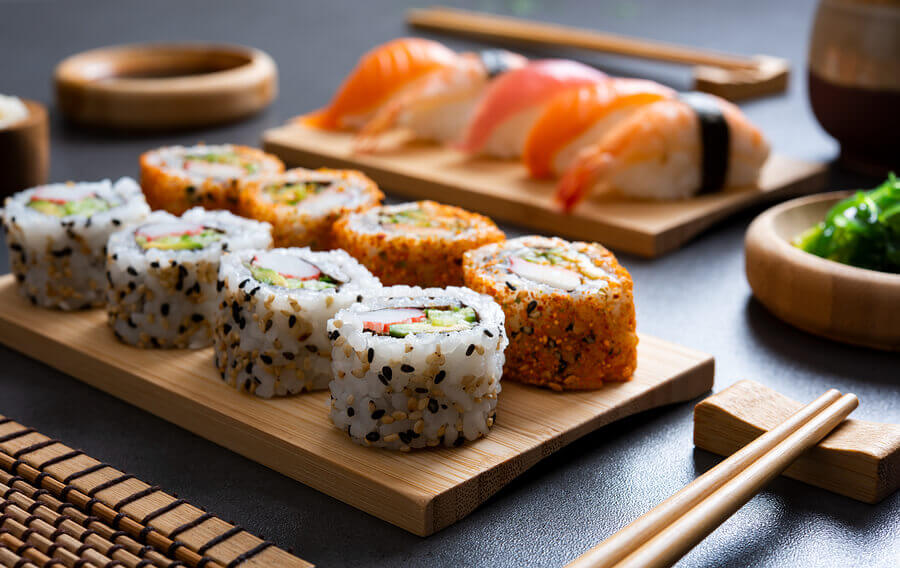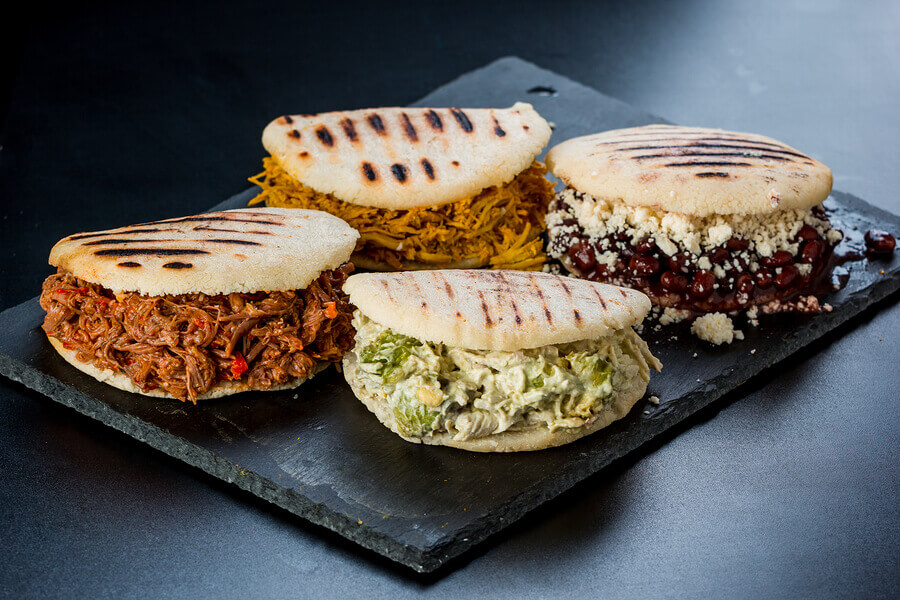Multicultural Cuisine in Spain: Mealtime and Globalization

In today’s global world, multicultural cuisine is a reality. Have you ever tried a fusion restaurant? How many sushi eateries you know? Gradually, all of the cultures in the world are mingling through cuisine. One of the easiest ways to see it is in our meals. This is especially true in the case of Spain. Have you ever thought about it?
The foreign population residing in Spain is fundamentally young. They usually come to the country in search of work.
In addition, migration also contributes to the rejuvenation of the population, thanks to the births that come from this group. The arrival of new people also involves new traditions. This situation favors the appearance of multicultural cuisine in Spain.
Immigration in Spain
Spain has a relatively large immigrant population. Among them, most of the people come from Central and South America. Alongside Eastern Europe, the Maghreb, Africa, and Asia.
As with the general population, immigrants’ distribution isn’t homogeneous. Because of it, 70 percent of the foreign population is concentrated in four autonomous communities (Catalonia, Madrid, Valencian Community, and Andalusia).
According to a study carried out in 2007, the immigrant collective residing in Spain is active in Spanish society. From the beginning, although they maintain some customs of their country of origin, they tend to incorporate their eating habits into the host society. This is the basis of multicultural cuisine!
Multicultural cuisine: main changes in Spain
Because of the important immigrant population, new Spanish cuisine is based on traditional recipes with a twist. Here are some of the main changes in eating habits caused by multiculturalism:
- A decrease in breastfeeding for work reasons.
- Increase in the consumption of dairy products due to greater availability, ease of consumption and price.
- Fish and shellfish are eaten less often. These ingredients are often less affordable than in the country of origin.
- The consumption of chicken meat and eggs is greater than before.
- Vegetables and fruits are replaced with those of the host country.
- Most immigrant cultures have lower consumption of green leafy vegetables.
- Juices, sugary juices and other foods with low nutritional density are consumed more often.

The consequences of multicultural cuisine
Of course, this change in nutritional intake has some consequences. In the first instance, the western diet is significantly more monotonous than others. This also involves a lower nutrient density and low inclusion of fresh products.
In this context, nutritional problems may arise. Here are the most common issues among the immigrant population are:
- Rickets (osteomalacia) in small children, due to deficits of calcium and vitamin D.
- Iron deficiency anemia, due to lack of iron in the diet.
- Cavities, due to the high consumption of sugary products.
- Obesity, due to the lack of physical activity and the increase in fat intake to the detriment of carbohydrates.
Some influences in new Spanish multicultural cuisine
As we’ve covered before, multiculturalism is one of the consequences of migratory movements and constitutes a source of cultural enrichment.
Islam and the people of the Maghreb
In this culture, food is based on adoration, subsistence, frugality, and sharing. This means people use their right hand to eat, as well as thoroughly washing their hands and mouth before eating.
For Islamic cultures, foods are classified into two groups: halal and haram.
The halal group includes the allowed foods, which include duly slaughtered meats. In addition, people can have tea or coffee in moderate amounts.
On the contrary, people aren’t allowed to have food belonging to the haram group. This includes pork and predators, alcohol, drugs and tobacco.
Islamic culture celebrates the ninth month of the lunar calendar, the Ramadan. This is basically a month of fasting in which only a copious meal is allowed at dusk. This meal usually begins with a harira, a typical Moroccan soup.
Not everyone is obliged to follow Ramadan. Children, sick people, pregnant women, or girls who are breastfeeding or menstruating don’t have to do it. On the other hand, everyone else from 15 years old and until they’re too old, will follow Ramadan.
South American countries
In the case of Latino culture, their diet heavily depends on the country of origin. Nevertheless, this cuisine tends to be somewhat similar to Spanish traditional dishes. The incorporation of new dishes to the traditional ones favors multicultural cuisine and the development of new flavors.
Venezuelan Tequeños or Colombian, Venezuelan and Bolivian arepas are now common in Spanish culture. In fact, in the Canary Islands, arepas are commonly eaten. This is proof that migratory movements favor eclectic cuisines.

Eastern European countries
Although the food varies depending on the country, cold weather favors certain dishes.
In general, eastern European cuisine has important French, Greek and Turkish influences. An example of this is using butter for cooking, as well as a sour cream sauce on different dishes.
Of course, in these countries, people really enjoy smoked fish and, above all, soups. Immigrants living in Spain end up upping their dairy and meat intakes.
In short, what’s clear is that multiculturalism in regards to gastronomy is very common in Spain. Because of our large immigration population, our cuisines are slowly entwining. Have you ever tried a plate from a culture different from yours?
In today’s global world, multicultural cuisine is a reality. Have you ever tried a fusion restaurant? How many sushi eateries you know? Gradually, all of the cultures in the world are mingling through cuisine. One of the easiest ways to see it is in our meals. This is especially true in the case of Spain. Have you ever thought about it?
The foreign population residing in Spain is fundamentally young. They usually come to the country in search of work.
In addition, migration also contributes to the rejuvenation of the population, thanks to the births that come from this group. The arrival of new people also involves new traditions. This situation favors the appearance of multicultural cuisine in Spain.
Immigration in Spain
Spain has a relatively large immigrant population. Among them, most of the people come from Central and South America. Alongside Eastern Europe, the Maghreb, Africa, and Asia.
As with the general population, immigrants’ distribution isn’t homogeneous. Because of it, 70 percent of the foreign population is concentrated in four autonomous communities (Catalonia, Madrid, Valencian Community, and Andalusia).
According to a study carried out in 2007, the immigrant collective residing in Spain is active in Spanish society. From the beginning, although they maintain some customs of their country of origin, they tend to incorporate their eating habits into the host society. This is the basis of multicultural cuisine!
Multicultural cuisine: main changes in Spain
Because of the important immigrant population, new Spanish cuisine is based on traditional recipes with a twist. Here are some of the main changes in eating habits caused by multiculturalism:
- A decrease in breastfeeding for work reasons.
- Increase in the consumption of dairy products due to greater availability, ease of consumption and price.
- Fish and shellfish are eaten less often. These ingredients are often less affordable than in the country of origin.
- The consumption of chicken meat and eggs is greater than before.
- Vegetables and fruits are replaced with those of the host country.
- Most immigrant cultures have lower consumption of green leafy vegetables.
- Juices, sugary juices and other foods with low nutritional density are consumed more often.

The consequences of multicultural cuisine
Of course, this change in nutritional intake has some consequences. In the first instance, the western diet is significantly more monotonous than others. This also involves a lower nutrient density and low inclusion of fresh products.
In this context, nutritional problems may arise. Here are the most common issues among the immigrant population are:
- Rickets (osteomalacia) in small children, due to deficits of calcium and vitamin D.
- Iron deficiency anemia, due to lack of iron in the diet.
- Cavities, due to the high consumption of sugary products.
- Obesity, due to the lack of physical activity and the increase in fat intake to the detriment of carbohydrates.
Some influences in new Spanish multicultural cuisine
As we’ve covered before, multiculturalism is one of the consequences of migratory movements and constitutes a source of cultural enrichment.
Islam and the people of the Maghreb
In this culture, food is based on adoration, subsistence, frugality, and sharing. This means people use their right hand to eat, as well as thoroughly washing their hands and mouth before eating.
For Islamic cultures, foods are classified into two groups: halal and haram.
The halal group includes the allowed foods, which include duly slaughtered meats. In addition, people can have tea or coffee in moderate amounts.
On the contrary, people aren’t allowed to have food belonging to the haram group. This includes pork and predators, alcohol, drugs and tobacco.
Islamic culture celebrates the ninth month of the lunar calendar, the Ramadan. This is basically a month of fasting in which only a copious meal is allowed at dusk. This meal usually begins with a harira, a typical Moroccan soup.
Not everyone is obliged to follow Ramadan. Children, sick people, pregnant women, or girls who are breastfeeding or menstruating don’t have to do it. On the other hand, everyone else from 15 years old and until they’re too old, will follow Ramadan.
South American countries
In the case of Latino culture, their diet heavily depends on the country of origin. Nevertheless, this cuisine tends to be somewhat similar to Spanish traditional dishes. The incorporation of new dishes to the traditional ones favors multicultural cuisine and the development of new flavors.
Venezuelan Tequeños or Colombian, Venezuelan and Bolivian arepas are now common in Spanish culture. In fact, in the Canary Islands, arepas are commonly eaten. This is proof that migratory movements favor eclectic cuisines.

Eastern European countries
Although the food varies depending on the country, cold weather favors certain dishes.
In general, eastern European cuisine has important French, Greek and Turkish influences. An example of this is using butter for cooking, as well as a sour cream sauce on different dishes.
Of course, in these countries, people really enjoy smoked fish and, above all, soups. Immigrants living in Spain end up upping their dairy and meat intakes.
In short, what’s clear is that multiculturalism in regards to gastronomy is very common in Spain. Because of our large immigration population, our cuisines are slowly entwining. Have you ever tried a plate from a culture different from yours?
All cited sources were thoroughly reviewed by our team to ensure their quality, reliability, currency, and validity. The bibliography of this article was considered reliable and of academic or scientific accuracy.
- Reher DS et al. 2008. Informe Encuesta Nacional de Inmigrantes (ENI-2007)
- Colectivo IOÉ et al. 2010. Encuesta Nacional de Inmigrantes 2007: el mercado de trabajo y las redes sociales de los inmigrantes. Madrid: Ministerio de Trabajo e Inmigración.
This text is provided for informational purposes only and does not replace consultation with a professional. If in doubt, consult your specialist.








